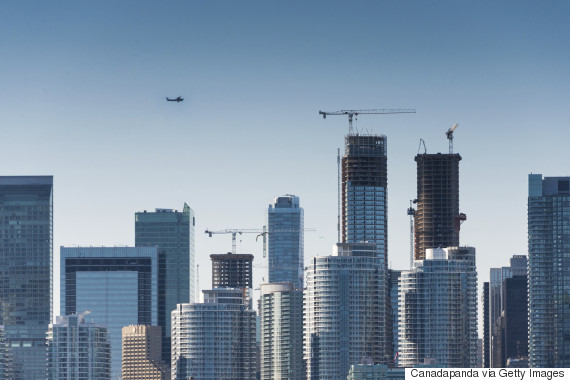solarz
Brigadier
The purpose of this thread is to post economic predictions and check in a few years whether they came true or not.
First one:
First one:
Desperate homebuyers, take a two-year breather. Housing speculators, take warning.
Toronto’s house-price juggernaut is two years away from the sort of peak it reached it 1989, when a housing bubble burst in the city, BMO Economics says.
“At the rate we’re now going with 20-per-cent year-on-year price increases, assuming stable mortgage rates and continued income growth, we’ll be at 1989 valuation levels in about 24 months,” senior economist Robert Kavcic wrote in a note last week.
-Advertisement-

Condo buildings under construction in downtown Toronto. A new study from the Ryerson City Building Institute says there is no housing shortage in Toronto; home construction is above historic norms compared to population growth. (Photo: Getty Images)
Kavcic's note comes shortly after BMO’s chief economist, Douglas Porter, declared it’s time to “stop the pretense” and admit .
Toronto's average house price jumped 27.7 per cent in February from a year earlier, to $859,186. Single-family homes soared to $1.57 million on average, a jump of nearly 30 per cent in a year.
Kavcic provided a chart showing how affordability broke off from its long-run average in early 2016, and is headed into bubble territory.
The 1989 housing market peak led to a seven-year period of house price declines in Toronto, with prices falling 39 per cent from their 1989 peak by 1996.
No housing shortage in Toronto?
The most common explanation given by real estate industry insiders for Toronto’s rising house prices is that there is a shortage of housing supply in the quickly-growing city. That's the argument used by the Ontario Real Estate Association to call for looser density requirements and looser restrictions on urban sprawl.
But a new report from Ryerson University’s City Building Institute, released Monday, says the rate of home construction in the Toronto area is “well above historical norms.”
The rate of construction of single-family homes, however, is slightly below its long-term average, said the report from Simon Fraser University assistant professor Josh Gordon.
Loosening building restrictions would do little to improve affordability in the short term, the study argued. House prices are being driven upwards not by a real shortage but by “powerful expectational dynamics” — the belief that prices will continue rising, causing people to rush buying homes.
The number of listings coming on the market is at similar levels as always, but since people are buying more quickly, there are fewer active listings at any given time. For instance, in Greater Toronto there were some 6,300 active MLS listings as of Monday morning, compared to 14,300 in the Montreal area, according to Realtor.ca. That creates the illusion of a shortage.
Cooling the market should be about "shifting" people's expectations, the paper argued.
“As housing bubbles are allowed to expand, many are hurt or drawn into unsustainable financial situations. This is particularly the case for young Torontonians,” Gordon wrote.
“When housing bubbles unwind, there is major collateral damage and people are hurt through little or no fault of their own. And the historical record is that they do unwind, essentially without fail.”
